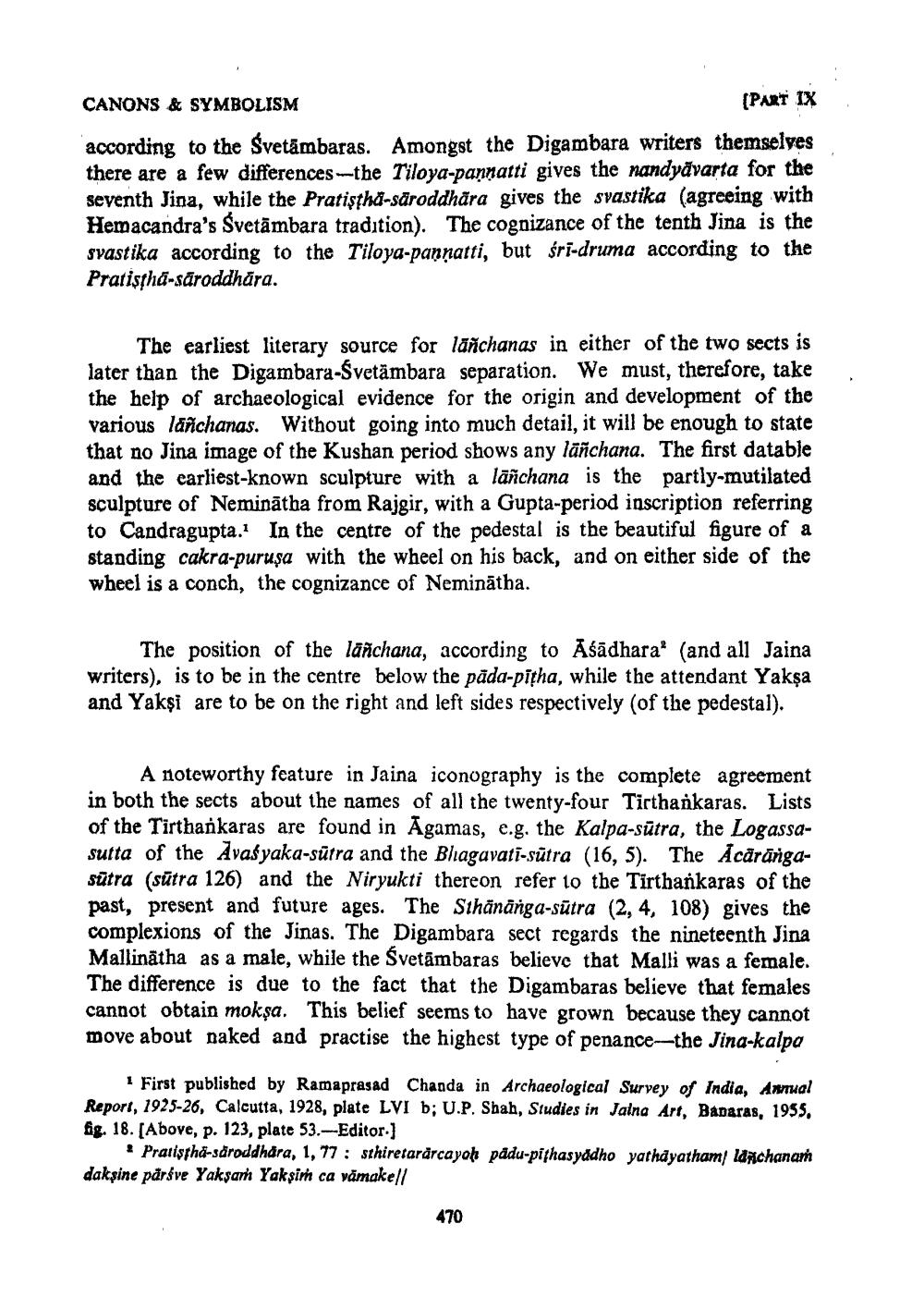________________
CANONS & SYMBOLISM
(PART IX according to the Svetämbaras. Amongst the Digambara writers themselves there are a few differences the Tiloya-pannatti gives the nandyavarta for the seventh Jina, while the Pratistha-säroddhāra gives the svastika (agreeing with Hemacandra's Svetämbara tradition). The cognizance of the tenth Jina is the svastika according to the Tiloya-pannatti, but śri-druma according to the Pratisha-säroddhāra.
The earliest literary source for lāñchanas in either of the two sects is later than the Digambara-Svetämbara separation. We must, therefore, take the help of archaeological evidence for the origin and development of the various lañchanas. Without going into much detail, it will be enough to state that no Jina image of the Kushan period shows any lañchana. The first datable and the earliest-known sculpture with a lañchana is the partly-mutilated sculpture of Neminātha from Rajgir, with a Gupta-period inscription referring to Candragupta. In the centre of the pedestal is the beautiful figure of a standing cakra-puruşa with the wheel on his back, and on either side of the wheel is a conch, the cognizance of Neminātha.
The position of the lāñchana, according to Asādhara' (and all Jaina writers), is to be in the centre below the păda-pitha, while the attendant Yakşa and Yakşi are to be on the right and left sides respectively (of the pedestal).
A noteworthy feature in Jaina iconography is the complete agreement in both the sects about the names of all the twenty-four Tirthankaras. Lists of the Tirthankaras are found in Agamas, e.g. the Kalpa-sūtra, the Logassasutta of the Avas yaka-sūtra and the Bhagavati-sūtra (16, 5). The Acărāngasūtra (sūtra 126) and the Niryukti thereon refer to the Tirthankaras of the past, present and future ages. The Sthānānga-sūtra (2, 4, 108) gives the complexions of the Jinas. The Digambara sect regards the nineteenth Jina Mallinātha as a male, while the Svetāmbaras believe that Malli was a female. The difference is due to the fact that the Digambaras believe that females cannot obtain mokşa. This belief seems to have grown because they cannot move about naked and practise the highest type of penance--the Jina-kalpa
1 First published by Ramaprasad Chanda in Archaeological Survey of India, Annual Report, 1925-26, Calcutta, 1928, plate LVI b; U.P. Shah, Studies in Jalna Art, Baparas, 1955, fig. 18. (Above, p. 123, plate 53.-Editor.)
Pratisha-sdroddhara, 1,77 : sthiretarárcayak padu-pithasyddho yathayatham, lachanam daksine päráve Yaksarh Yaksim ca vamakell
470




